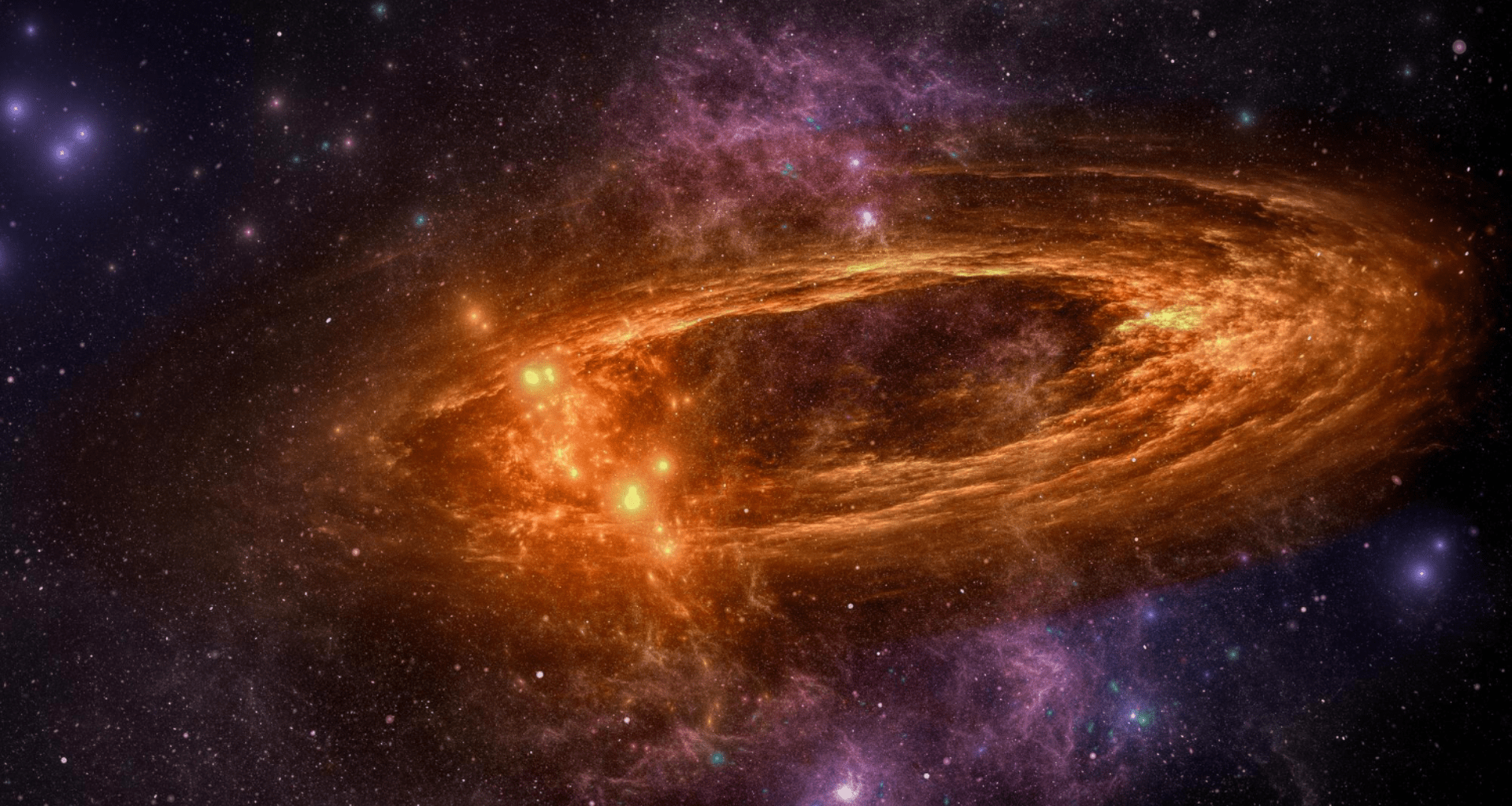Astronomers have uncovered a remarkable new addition to the catalog of ultra-luminous infrared galaxies (ULIRGs) – cosmic powerhouses that shine with more than a trillion times the luminosity of our Sun and forge stars at astonishing rates of up to a thousand solar masses per year.
These galaxies, known for their extreme energy output, play a crucial role in understanding how stars and galaxies evolve over time.
The latest discovery came unexpectedly during observations of the quasar H1413+117, better known as the Cloverleaf. First detected in 1984 and located about 11 billion light-years away, this well-known quasar concealed behind it an ultra-bright infrared galaxy – hidden until now from view.
Massive infrared galaxy obscured by quasar light
Led by Natsuki H. Hayatsu, the team used the ALMA radio telescope to study the famous Cloverleaf quasar – and stumbled upon something unexpected. Their observations revealed an ULIRG hidden just behind the bright quasar, invisible to traditional optical telescopes.
The researchers describe the object as an “optically dark” galaxy that escaped detection in earlier surveys. It sits about six arcseconds from the Cloverleaf, at a redshift of roughly 3.39, placing it deep in the early universe. The galaxy is massive, with a molecular mass estimated between 40 and 230 billion Suns, and a central black hole of about 100 million solar masses.
The astronomers determined that the newly discovered ultra-luminous infrared galaxy emits an enormous amount of energy – about 400 tredecillion erg per second in X-rays and roughly 2.8 trillion times the Sun’s luminosity in infrared light. However, despite its brilliance, the system remains invisible in optical wavelengths, shrouded by thick layers of dust and gas.
Further analysis revealed that the galaxy’s molecular gas has not yet reached a stable state, suggesting it is in the midst of an early-stage, gas-rich merger.
Newly found ULIRG could be an early stage of galaxy evolution
According to the researchers, the newly found ULIRG might represent an early stage in the evolution of massive galaxies. They suggest it could be a precursor to a hot, dust-obscured galaxy – a phase that may eventually lead to the formation of an active galactic nucleus (AGN) and, over time, evolve into an elliptical galaxy like those seen in the nearby universe.
The researchers emphasize that additional, high-resolution observations focusing on the galaxy’s molecular gas are essential to fully understand its current state and future evolution. By examining the movement, density, and composition of this gas, astronomers hope to uncover whether the system is indeed in the early stages of a major merger or transitioning toward a more mature phase of galaxy development.
The team concluded that determining the stage of this optically dark galaxy – whether a powerful starburst, a quasar, or a hot dust-obscured galaxy – requires understanding the condition of its gas, with a particular focus on the dense molecular gas that fuels star formation, which will be the focus of upcoming research.

